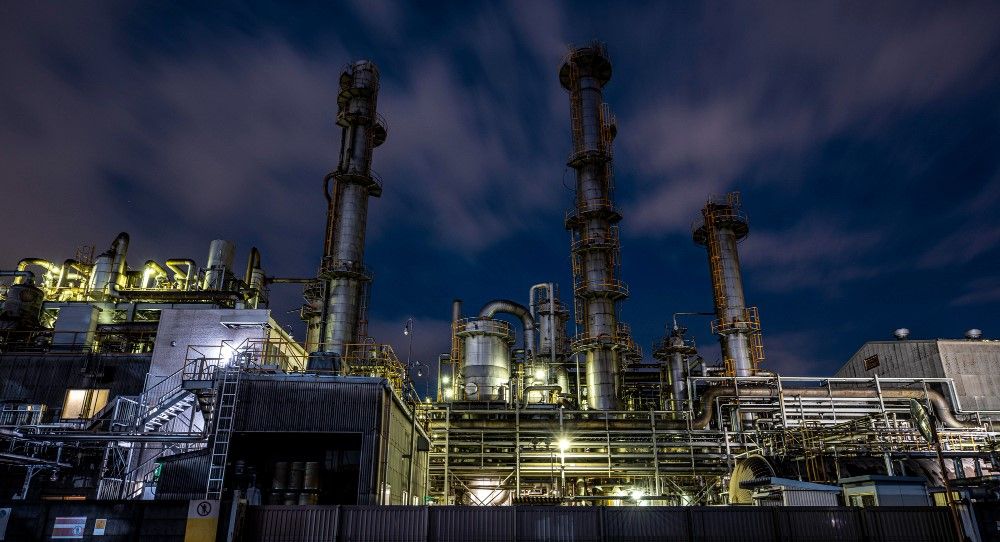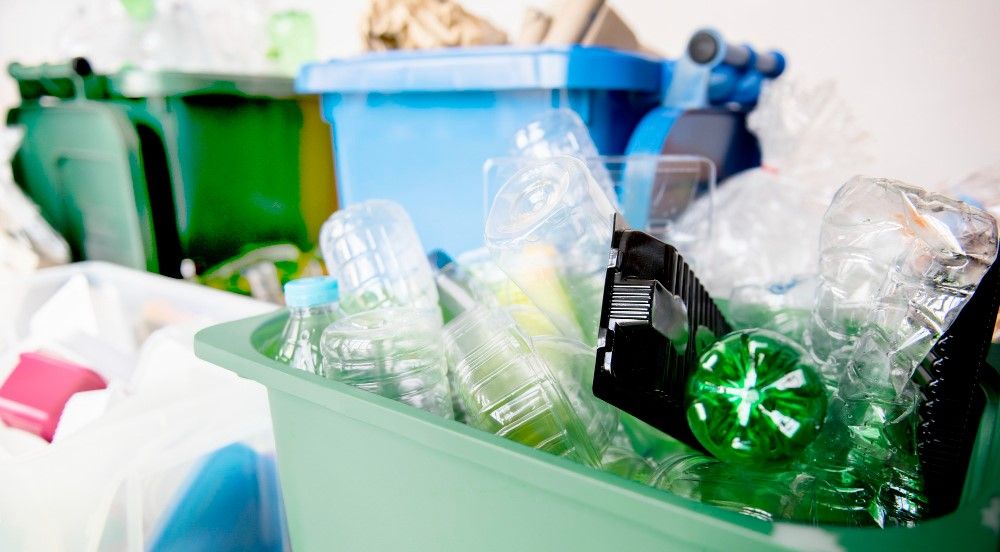The chemical industry has been through major upheaval over the last few years.
The global pandemic, supply chain logjams, the war in Ukraine and Russian sanctions, raw material price spikes, and the transition to NetZero have all been disruptive.
But what lies ahead for 2024? What are the trends and market inputs that will shape the coming twelve months and what should the chemical industry watch out for between now and 2025?
1.The Global Economy
Fear of a dramatic slump in the global economy is gradually being allayed as there are increasing indications of a ‘soft landing’ and a possible bounce back. As a result, many analysts are projecting a moderate recovery in chemical production throughout the year.
For many industrial chemical producers, destocking will probably give way to restocking, although in some sectors the underlying downturn in demand and overcapacity will probably persist.

Bearing this in mind, chemical industry investment will be relatively slow. This is supported by data from the American Chemistry Council which reports that, “… capital spending for the US chemical industry will remain mostly unchanged year over year in 2024 before ramping up to a growth rate of 3%–4% annually in 2025–2026.”
2. Onshoring, Nearshoring, and Friendshoring
The COVID-19 epidemic caused widespread supply chain problems, which were made worse by the Russia-Ukraine conflict. Additionally, the localization of supply chains is being encouraged by the push to decarbonise as this not only makes bio-based and recycled feedstocks more economically viable, but also lowers supply chain emissions by reducing long-haul transportation. Friendshoring, on the other hand, tries to lessen geopolitical concerns, evident in trade agreements such as the lithium supply chain security recently made between the US and Australia.

“Building resilient supply chains may be key to the success,” notes a recent chemical industry review by consultants at Deloitte. “So far, companies have demonstrated their ability to innovate through new business models and partnerships. Some companies have signed long-term contracts with feedstock suppliers and recycled content offtakers to help minimize risks. A few companies have expanded vertically to operate along a larger part of the supply chain. And others are collaborating with companies to build a more extensive network for feedstock and processing. Increased collaboration across the supply chain will likely continue to be critical in 2024 to take steps toward ensuring sufficient feedstock for these recycling facilities.”
3. Feedstock and Energy Prices
In the past, the comparative expense of energy and feedstock has frequently affected the ability of regional chemical industries to compete. Current geopolitical developments have now put chemical industry players in extreme positions on this front and are causing several chemical producers and suppliers to reconsider the long-term sustainability of their business models.
One key example of this volatility is the price of liquefied natural gas (LNG) with record highs experienced in the summer of 2022, before the global price moderated in 2023.
Nevertheless, until it moves to greener alternatives or secures more volume under long-term contracts, much of the demand in Europe will be subject to these pressures until the balance of new export and import capacity stabilizes the market.

In the meantime, 2024 will see China continue to profit from oil and gas commerce with Russia as well as larger volumes of LNG under long-term contracts, while the United States and the Middle East are anticipated to gain from relatively inexpensive domestic natural gas and liquefied petroleum gas (LPG) supplies.
4. Energy Transition
A surge of manufacturing activity that relies on materials and chemicals for support is being brought about by the energy transition.
With the need to move away from fossil fuels now a political objective, the last few years has seen a rise in government investment in this sector. For example, the EU’s Green Deal has earmarked sizeable support for the energy transition, as according to the European Commission, “… energy investments in the EU will have to reach €396 billion per year from 2021 to 2030 and €520-575 billion per year in the subsequent decades until 2050.”

Similarly, in the US private and public investment into energy transition is strong with the 2021 Infrastructure Investment and Jobs Act (IIJA) committing over US$70 billion to the development of clean energy projects and electric car (EV) infrastructure. In addition to this, the 2022 Inflation Reduction Act (IRA), the Creating Helpful Incentives to Produce Semiconductors (CHIPS) and Science Act, and other laws are injecting an additional US$469 billion in funding and tax incentives into the domestic production of solar panels, lithium-ion batteries, semiconductors, and other clean energy technologies.
The demand for materials and chemicals required to enable the energy transition is therefore anticipated to increase in 2024 and beyond as the effects of these policies ripple through the economy.
5. Advanced Plastic Recycling
Recyclable plastics investments are growing in response to government regulations and brand objectives. Numerous companies have made it clear that they want to employ more recycled materials and create reusable or recyclable packaging, while lowering scope 3 emissions has become a major macro-economic goal.
In the meantime, both the US and Europe are continuing to enact limitations and outright bans on single-use plastic. By the end of 2024, a UN treaty to halt plastic pollution is anticipated to be signed with the hope of speeding efforts to make plastics more circular.

Even with these factors, the current recycling rate for plastics is barely 9%. However, if all the advanced recycling projects scheduled for completion between 2023 and 2026 are put online, then advanced recycling capacity should more than triple.
6. Government Policies
Intercontinental competition is also being impacted by new climate-related regulations. To combat US subsidies and stop an industrial flight, Europe unveiled the Green Deal Industrial Plan in February 2023.In a further attempt to help level the playing field between the European Union and its fossil fuel rich competitors, it also added a carbon price on a number of items that are high in carbon in May 2023 with the adoption of the Cross Border Adjustment Mechanism (CBAM). The impact of CBAM is not expected to be completely felt until 2026 at the latest, but it has the potential to split the world's product markets into those with higher and lower carbon intensity, which will have a significant impact on chemical manufacturers everywhere.
7. Bio-based Feedstocks
The growth of bio-based feedstocks continues to show promise, especially in Europe where the need to replace fossil fuels as a raw material has become an economic necessity. However, it is the political commitment of the Biden administration which announced a goal to “displace 90% of plastics over the next two decades by harnessing biotechnology and biomanufacturing” that has really set the pace of change.

While Biden’s move may be seen as a hollow promise from an aging politician, the US Department of Defense’s 2022 pledge to invest US$1 billion in bio-industrial domestic manufacturing infrastructure over the next five years is expected to act as a catalyst for chemical industry change and a signpost for the direction that feedstock procurement and production is heading.
8. The PFAS Question
Numerous companies have declared their plans to remove PFAS from their product lines in response to chemical safety concerns. Meanwhile, the European Commission has pledged to outlaw thousands of dangerous, ‘nonessential’ and potentially harmful chemicals (including PFAS) by 2030 as part of the Green Deal that was unveiled in 2020.
As part of the same trend, the Environmental Protection Agency in the United States has proposed to classify certain PFAS as hazardous substances under the Comprehensive Environmental Response, Compensation, and Liability Act, while more than 20 US states have already declared that specific PFAS-containing products, like food packaging, cosmetics, and firefighting foam, will no longer be allowed.

Today, the focus on future legislation is examining the dangers of fluoropolymers which are considered to be polymers of low concern under the Organization for Economic Cooperation and Development criteria.
The challenge for chemical manufacturers and the wider economy is that there are currently no simple substitutes for fluoropolymers in uses, such as solar panels, green hydrogen, and lithium-ion batteries.
The chemical industry is therefore waiting for regulators to establish the rules which it must follow before significant investment can begin.
9. Next Generation Digital Technologies
Throughout 2024, the chemical industry is expected to further embrace the advantages of going digital, such as Artificial Intelligence (AI) and other Industry 4.0 technologies (digital twins, robots, and the Internet of Things). At present, these tools are being used to automate processes and collect data, but the next stage is to apply AI or Machine Learning in conjunction with other technologies to expedite the discovery of new raw materials, shorten the time to market, and completely optimise industrial chemical processes.

2022 was a difficult year for industrial chemical manufacturers and suppliers. Consequently, many in the chemical industry were hoping for a minor production comeback in 2023. However, by the middle of the year, a number of chemical companies had lowered their forecasts.
Looking forward to the year ahead the chemical industry will undergo remarkable transformations driven by technological advancements and sustainability initiatives. From innovative materials and processes to cutting-edge research and development, to green chemistry, the energy transition, and the role of artificial intelligence in revolutionizing chemical manufacturing. Legislation and the direction of investment will also shape the sector’s future.
Overall, however, those that have survived the turbulent last few years look well set for a prosperous chemical industry in 2024 if the global economy grows as expected.
Photo credit: Freepik, Wiroj Sidhisoradej, DESIGNECOLOGIST, Rawpixel, Wirestock, DCStudio, Rawpixel, Evening-tao, twatchai07, & Usertrmk